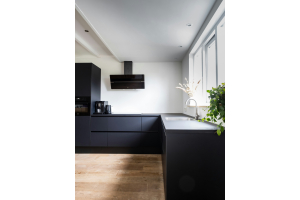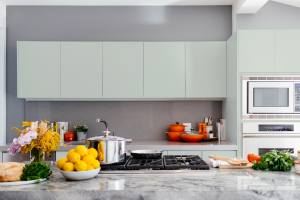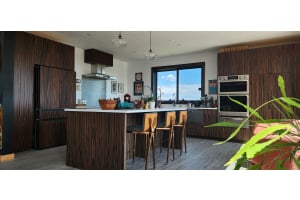Hinges are the most common cause of issues with interior modern doors–if the hinges are not correctly fitted or need adjusting, they can mean the door does not open or close smoothly. You may also need to adjust hinges if you wish to switch your door from left to right-hand opening, although we provide a range of options to ensure your new door arrives ready to fit.
With a standard size for interior doors used throughout home building industries, the hinges should be relatively simple to adjust!
Typical Issues Caused by Door Hinges
Common hinge issues occur when a door has been fitted with short, shallow screws. Over time, the hinge can gradually start to pull away from the frame because the weight of the solid door is heavier than the screws can hold. Doors that start to sag or rub against the frame won’t close properly and can become jammed.
Another common problem occurs if the mortise (the cut-out the hinge fits into) is the wrong size. A shallow mortise usually means the door doesn't fit accurately into the frame. If it is too deep, the door feels too tight and requires force to close it properly.
The third reason for a door not functioning correctly may be that the hinges are the wrong size for the insets and back sets on the door frame. Larger insets mean the door is too tightly flush with the frame; conversely, you can have a gap if the hinge is larger than the space within the frame.
Regardless of the cause, if your door is not opening or closing smoothly, it is likely an issue with the hinges. We recommend adjusting the hinges straight away because if left, these minor niggles can damage the door and the frame.
How to Fix Loose Door Hinges
Step one is to tighten your top hinge. Even if you have three high-quality hinges, the top hinge always bears the most weight because it holds the pressure of your solid door, whereas the lower hinges provide stability.
If the door feels unbalanced, you can tighten the screws with a screwdriver (electric or manual) which should straighten the door and ensure it closes nicely without snagging on the frame.
Replacing Short Screws
If you have tightened your top hinge and the door still isn't straight, you can replace the screws with a longer model–three-inch screws are ideal. We'd suggest changing the screw in the middle first because this helps pull the door back closer to the frame and makes it easier to replace the other two.
Correcting Hinges and Mortises
Doors without any gap between the frame do not close correctly, which means you need to adjust the hinges to fit properly within the mortise–this is the plate that connects the functioning hinge to the door. You can start with the bottom hinge and unscrew it to see whether there are marks and signs that indicate it is being compressed.
The simple solution is to plane a tiny amount away from the frame with a small chisel or utility knife to ensure there is plenty of capacity for the hinge to fit into the mortise without jamming the door. It's best to approach this gradually, removing minimal amounts at a time and re-screwing the hinge into the mortise to check the door is opening and closing correctly.
Adjusting Interior Closet Door Hinges
Interior closet doors may also need to be adjusted if they are sitting in the wrong position or the door appears to be sagging. These hinges work differently from standard door hinges and normally have a central adjusting screw.
You can remove the two screws that connect with the cupboard door, often in a slotted hole; once the screws are loose, you can move the hinge carefully up or down and tighten the screws when they are perfectly aligned. Slightly off-center closet doors can be moved sideways using the adjusting screw in the middle of the hinge. There may be a locking screw on the outer edge, which you need to loosen first.
Finally, if you have a closet door that creaks, it usually means the door is too close to the frame, wall, or cabinet sides. You can loosen the locking screen, slide the door as far out as needed, and tighten the hinge again.





